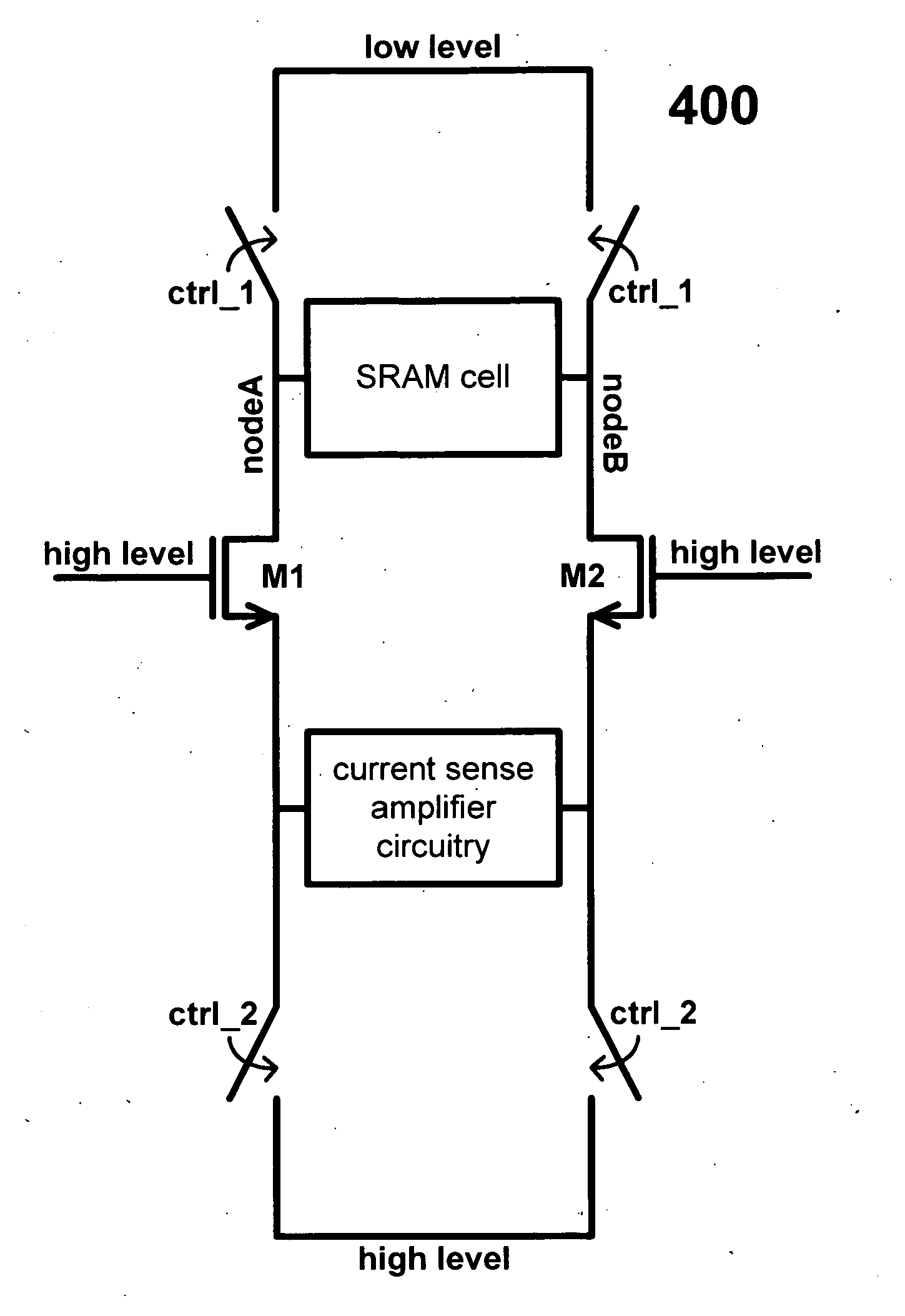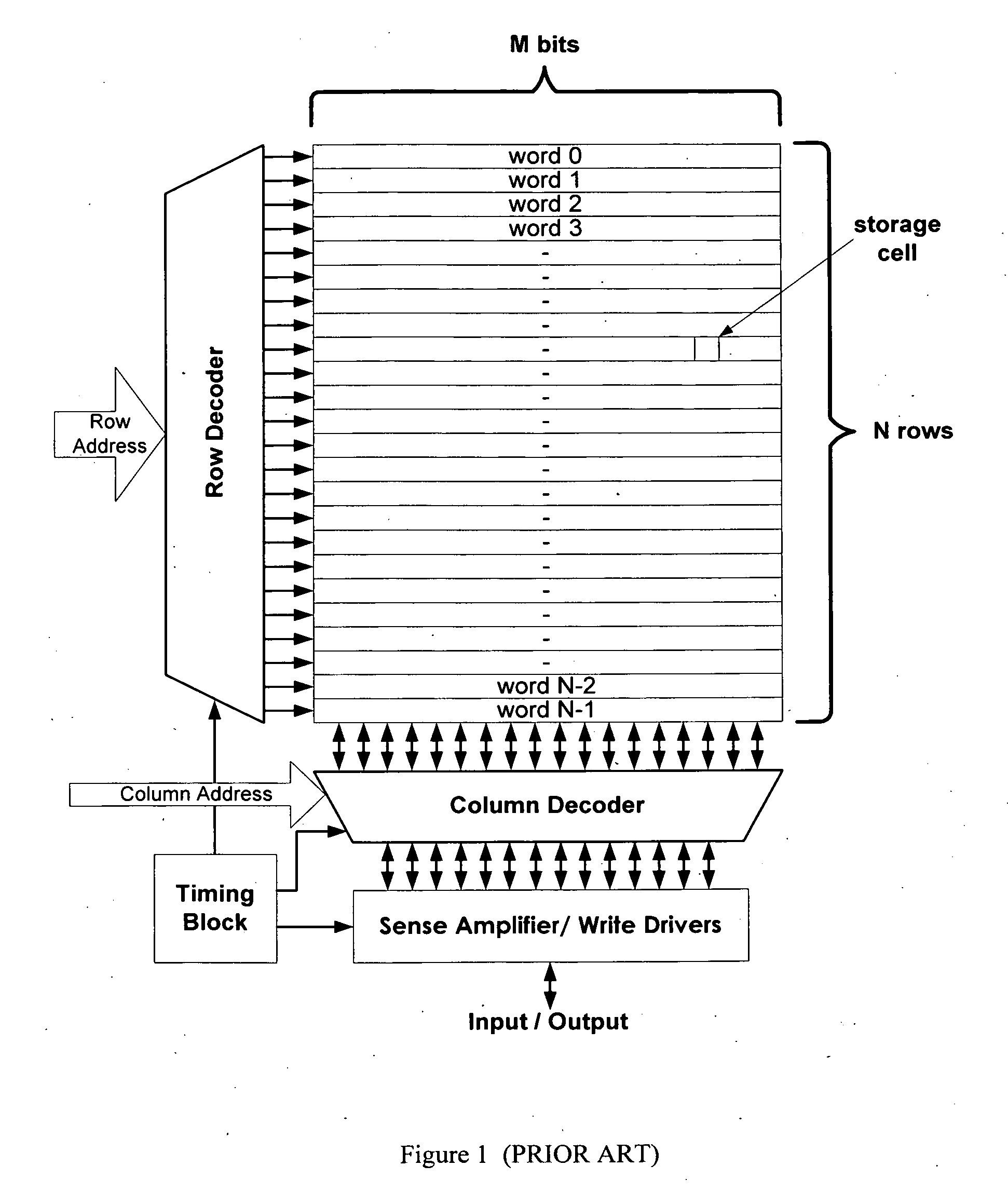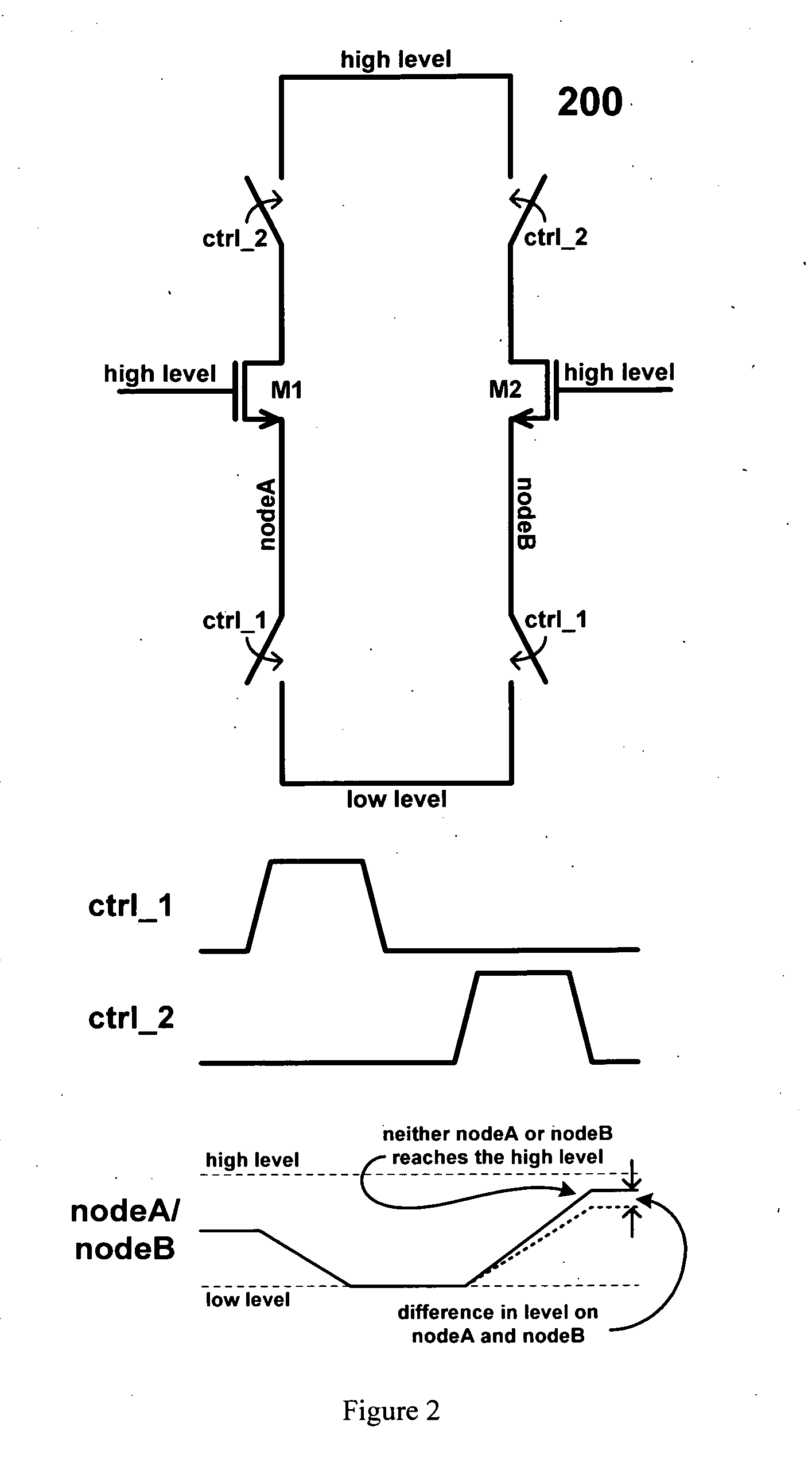Sense-Amplification With Offset Cancellation For Static Random Access Memories
a random access memory and offset cancellation technology, applied in the field of sense amplification with offset cancellation for static random access memories, can solve the problems of large embedded memory integration, increasing random variability, rough line edges, etc., and achieves the effects of shorter cell access time, higher data stability, and high sensitivity to the current of the sram cell curren
- Summary
- Abstract
- Description
- Claims
- Application Information
AI Technical Summary
Benefits of technology
Problems solved by technology
Method used
Image
Examples
embodiment 400
[0030]FIG. 5 is a circuit diagram showing the details of the embodiment 400. In this configuration the nodes nodeA and nodeB are commonly referred to as bitlines.
[0031]FIG. 6 shows the associated waveforms for the embodiment 400. During the read operation the bitlines develop a differential voltage. After a period of time the sense amplifier is enabled via a control signal SAE. Once the signal SAE is enabled the current sense amplifier turns on and amplifies the differential voltage on the bitlines to full swing.
[0032]FIG. 7 is a conceptual diagram showing one possible implementation where the offset cancellation scheme is utilized in conjunction with a voltage sense amplifier. The transistors of interest as labelled M1 and M2 and in this embodiment are NMOS transistors. This is a voltage sense amplifier as the sense amplifier senses the voltage at the gates of the transistors M1 and M2. During the offset cancellation stage the input to the transistors M1 and M2 is held at a high vo...
second embodiment
[0037]FIG. 10 is a circuit diagram showing the scheme 700 and it is denoted by the number 1000. In this configuration the nodes nodeA and nodeB are also the output nodes of the sense amplifier. Transistors M3 and M4 are multiplexing transistors which connect the sense amplifier to the SRAM cells via complementary signals known as bitlines (BL and BLB).
[0038]The gates of the NMOS transistors M1 and M2 need to remain at a high voltage level during the offset cancellation stage. The sense amplifier enable signal SAE is used to control the voltage level at the gates of transistors M1 and M2. During the offset cancellation stage the signal SAE is low and as such the input signals to the transistors M1 and M2 are held at a high voltage level via transistors M5 and M6. Moreover, the signal SAE is low thus transistors M3 and M4 are off, blocking the signals BL and BLB. During the offset cancellation stage first the signal ctrl_1 is enabled. This turns on transistors M7 and M8, thus connecti...
embodiment 1000
[0040]The waveforms in FIG. 9 are also applicable to embodiment 1000.
[0041]FIG. 11 is a conceptual diagram denoted by the number 1100 showing one possible implementation where the offset cancellation scheme is utilized in conjunction with a voltage sense amplifier. The transistors of interest as labelled M1 and M2 and in this embodiment are PMOS transistors. This is a voltage sense amplifier as the sense amplifier senses the voltage at the gates of the transistors M1 and M2. During the offset cancellation stage the input to the transistors M1 and M2 is held at a low voltage level in order that they remain on. During the offset cancellation stage the transistors M3 and M4 are off in order to isolate the sense amplifier from the bitlines. When the signal ctrl_1 is enabled the nodes nodeA and nodeB are connected to a high voltage level through the transistors M1 and M2. M1 and M2 are PMOS transistors and as such nodes nodeA and nodeB are able to reach the high voltage level. When the s...
PUM
 Login to View More
Login to View More Abstract
Description
Claims
Application Information
 Login to View More
Login to View More - R&D
- Intellectual Property
- Life Sciences
- Materials
- Tech Scout
- Unparalleled Data Quality
- Higher Quality Content
- 60% Fewer Hallucinations
Browse by: Latest US Patents, China's latest patents, Technical Efficacy Thesaurus, Application Domain, Technology Topic, Popular Technical Reports.
© 2025 PatSnap. All rights reserved.Legal|Privacy policy|Modern Slavery Act Transparency Statement|Sitemap|About US| Contact US: help@patsnap.com



